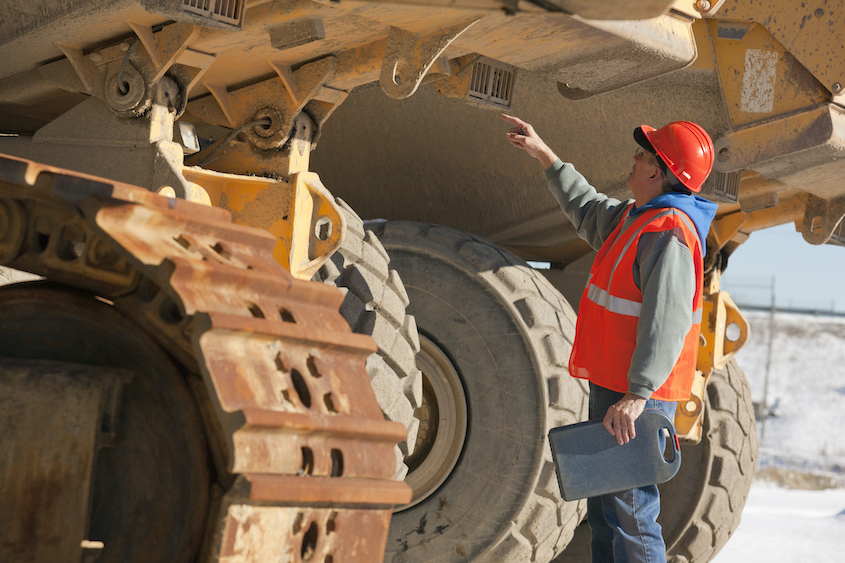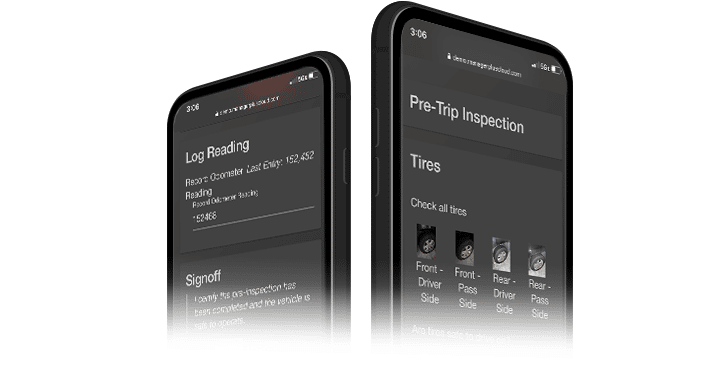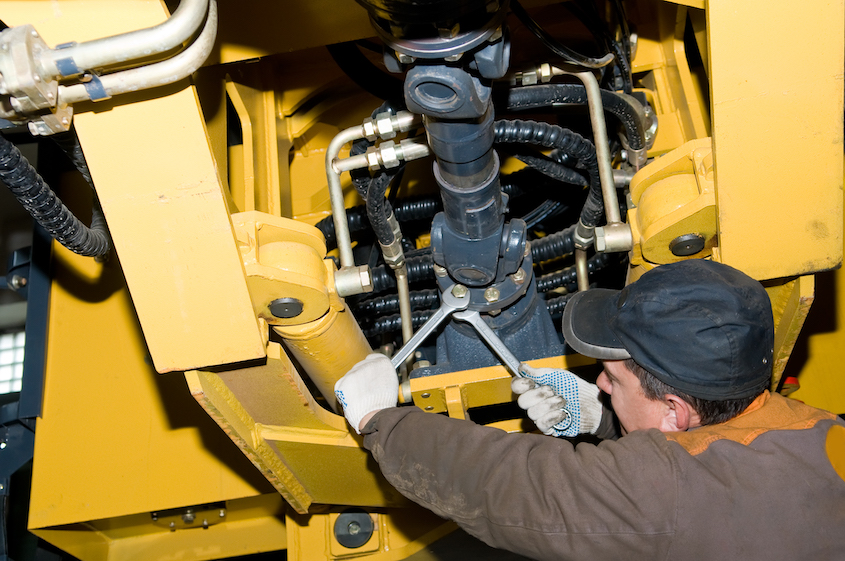Our world has been undergoing an incredible transition over the last decade. With the advent of the smartphone and other always-connected devices, virtually every aspect of our society has been shifting toward the digital.
The construction industry has been no exception, as everything from construction equipment to safety and even water projects join the digital transformation.
While there are many benefits directly related to digitizing construction, it’s also not uncommon to face opposition to new technologies and strategies.
Once you have a better understanding of just how vital digital technology can be for your organization, it’s easier to get other people excited about the possibilities.
What is digitization?
In the broadest terms, the “digitization” of an industry refers to the process of incorporating digital technologies to improve efficiencies through data. We could get a lot more in depth as to what the specifics of that look like for different industries, but for the construction industry, it means using vast amounts of data concerning your assets, crews, and equipment to reduce costs while improving operational efficiencies and safety.
Today, as part of the next industrial revolution, digitization usually involves connected technologies using the Internet of Things (IoT) to collect data, which is then analyzed by enterprise asset management (EAM) software like ManagerPlus to generate reports and help you monitor how your assets are performing.

Benefits of digitization
There are quite a few concrete ways that adopting digital technologies can have a meaningful impact on your organization.
There’s a saying in the business world: “Data is king.” The simple premise is that the more information we have, the better we can do.
Think back to your high school football days. Sure, you could run and throw the football, but you needed a coach with more experience and knowledge about the sport than you had to show you how to improve.
The same is true for business and especially for managing assets. You know how to turn on and operate your machines, and you know how to replace parts when they break. But with in-depth, up-to-the-minute data on your assets, you can make them run even better.
Some of the most impactful things you can do by incorporating connected technology into your operations are:
- Improve safety
- Cut maintenance costs
- Increase overall efficiency
- Maintain regulatory compliance
- Make informed purchasing and investment decisions
Improve safety
Protecting your employees is the most important goal your company has, and the construction industry is one of the most dangerous industries to work in. According to the 2019 Bureau of Labor Statistics fatalities report, the construction industry had the second highest number of fatalities for the year, more than one-fifth of all recorded deaths.
By having an eye-in-the-sky view of everything happening at your construction sites, you can have a much better idea of how to protect your employees while they’re on the job. You spot safety issues before they can lead to accidents.
Reduce maintenance costs
Saving money is something everyone can get behind, especially in difficult economic times. When you know exactly how your assets are performing and where you’re spending money on maintenance and repairs, you can easily discover gaps in your operations that may be costing you more than they need to.
Improving safety is also a big part of cutting costs. More injuries on the work site means more litigation and more money your company has to spend. It’s much more cost-effective to invest the money up front to keep employees safe.
Increase overall efficiency
Once your coach showed you a better way to throw the football, you were able to score more points and be a more effective quarterback. The same applies to your business. The more data you have about your operations, the more you can find areas where you could work more efficiently.
The old saying “You don’t know what you don’t know” is absolutely true. Until you are told or shown that what you’re currently doing is not the best way, you can’t begin the process of fixing it.
If you were hesitant about renting another bulldozer for your worksite but saw a business intelligence report generated by your asset management software that showed it would actually save you money in the long run by helping you finish the job faster, you wouldn’t hesitate to do it.
Maintain regulatory compliance
Inspections are a part of doing business in the construction industry, and there are always more and more things you have to inspect and track. Trying to manage paper and spreadsheet inspection reports is tedious and time consuming, and it’s extremely easy for reports to get lost.
If you have a digital software database that allows your operators to perform inspections wherever they are and then stores the records for you so you can access them whenever you need them, you can save yourself a lot of time and headache.

Make informed decisions
Trying to decide which candy bar to buy from the grocery store is a whole lot easier than trying to make investment decisions for your company. There are a number of factors to consider when looking to purchase new equipment and when you have in-depth reports on the key performance indicators (KPIs) your company uses to make purchasing decisions, you can be confident that you’re making cost-effective decisions.
For instance, you might discover that the total cost of ownership (TCO) for one of your work trucks is a lot higher than the rest of them. Replacing it would save you money.
How to convince the decision-makers
You might have already done your research and looked into adopting digital technologies for your company, but you’re having trouble convincing the C-suite to sign the check.
When you’re thinking about how to get the right people on board to implement new technology, there’s a few questions to ask yourself:
- Who needs to be on board?
- Who will be the hardest to convince?
- How can I show them the benefits of this technology?
While there are always a few key decision-makers you need on your side, often the most impactful people you can get buy in from are the ones who will be using the new technology on a regular basis. If everyone on your team can see the value in adopting new technology to make them more productive, that can go a long way in convincing department heads of the need for it.
You might feel like the department head who always says “no” will be the hardest person to convince (and in many cases you might be right), but often the hardest people to convince can be the same team members who will be most impacted by the adoption of the technology.
Human beings are naturally creatures of habit, and when we settle into a routine that works for us, especially in our jobs, it can be hard or even intimidating to imagine significantly changing the way we do our jobs. Our jobs are important to us, so trying to think about doing something differently, especially when I don’t know if it will actually make me better at my job, is a difficult hurdle to overcome.
Aside from showing them how much technology like EAM software can make their jobs easier, when they can actually see how easy a program like ManagerPlus is to use, they’ll be much more excited to use it in their daily workflows.

The other department that might need some convincing is accounting. They are usually hesitant to get behind any big purchases unless they can see the financial benefit from it. We’ve already talked about how you can save costs and improve efficiency at your company, but when you can sit down and show them how much EAM software really can save you over the life of your assets, they’re much more inclined to lend their support.
By far the most important reason to consider investing in this newer technology is that it’s proven to provide a safer work environment. When you can digitize your construction site, communication regarding safety events happens at the touch of a button instead of the speed of a phone call. Inspections to detect faulty equipment can happen and be updated instantly with work orders generated and assigned automatically. Critical repair work can begin in a matter of minutes instead of hours or even days.
Any executive or decision-maker who can see the safety and cost benefits from digitizing your work environment would be hard pressed to find a reason to say no.
What exactly is EAM software?
Enterprise asset management software like ManagerPlus is specifically designed to help companies manage and evaluate every part of the life of their assets. Everything from work orders to inspections to inventory, you can keep track of all of it with EAM software.
ManagerPlus gives you the tools to:
- Manage and train your crew more efficiently
- Eliminate unnecessary downtime to complete projects on time
- Track parts, inventory, and equipment to keep costs down
- Discover gaps in your productivity to boost profitability
- Create detailed work orders to ensure accurate, long-term maintenance
- Ensure up-to-date regulatory compliance to keep your site safe
Retain valuable know-how
One of the biggest challenges asset maintenance crews will be facing over the next several years is retiring experts. Technicians who have spent their careers repairing equipment and have become extremely knowledgeable will be moving out of the workforce. Unfortunately, when they leave, your equipment will still need to be repaired.
Using EAM software you can build custom work order templates where your more experienced techs can include detailed instructions on how to perform certain tasks. They can even include pictures and manufacturer user manuals to ensure that the job gets done right every time. You can also keep track of maintenance work so you can easily follow up with the tech that completed the job if you have questions.
Eliminate unplanned downtime
Reducing downtime is a primary goal for any asset manager, and EAM software is designed to help you do just that. Although some downtime will always happen, unplanned downtime can cost an average of $260,000 per hour. The good news is that unplanned downtime is almost entirely avoidable which significantly reduces your reactive maintenance. One ManagerPlus user recently cut their reactive tasks by over 67% while simultaneously improving their preventive maintenance completion rate to 93%.
The most effective way to reduce unplanned downtime is through developing and implementing a strong preventive maintenance strategy at you company. EAM software helps you do this by tracking your asset usage and notifying you when an asset might fail. For instance, if you have a work truck that will need an oil change at 100,000 miles, ManagerPlus can notify you at 95,000 so you won’t have a catastrophic engine failure because you didn’t change the oil in time.
Track everything you need
One cost you might not think about too often is the parts you have sitting in your inventory. You need them to repair your equipment so you don’t have a choice, you have to have them on hand. Using EAM software to track your inventory can potentially show you excess parts you might be carrying. Now you can make more cost-effective purchasing decisions about MRO inventory.
Plug the gaps
Often one of the biggest gaps in maintenance programs is miscommunication between your team and your vendors. If you need to contract someone to come repair a particular asset, calling and emailing to describe the problem, arranging the time for work to be done, answering questions, following up to ensure the work gets done, getting a final invoice, and everything else is a huge waster of time.
A good EAM solution lets you automatically generate and assign work orders to your vendors just like you would for your internal team. In ManagerPlus, our Vendor Portal emails a temporary link to the vendor so they can access only that particular work order along with any relevant information, keeping the rest of your data safe and secure.
Automate recurring maintenance
A good portion of maintenance work is standard preventive maintenance such as changing the oil in a truck. By digitizing these activities, you can schedule work orders to go out every time this maintenance will be needed so you don’t have to write it down on a calendar or hope you remember when the time comes. The software will generate it, assign it to the correct technician who can perform the task and complete the work order without you having to lift a finger.
Maintain regulatory compliance
The same functionality can also apply to inspections. You know you’ll need to perform inspections at regular intervals to remain compliant with governmental regulations and industry standards . If an operator marks an asset as failed in the ManagerPlus mobile app, you can set up the software so it automatically generates and assigns a work order to a technician. Best of all, since the software lives in the cloud, you have instant access to all your inspection reports so you’re ready to go when it’s time for an audit.
It’s a culture thing
Ultimately, digitizing your company and the construction industry at large is a journey that won’t be completed overnight. We’ve come a long way from paper and spreadsheets and the technology we have now is making us safer and more efficient.
As a construction manager, you can begin changing the culture at your company where you value data and recognize the importance of having as much data as you can get. The more data you can gather on your assets and your work site, the safer and more productive everyone can be.

